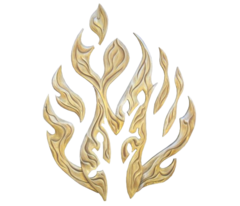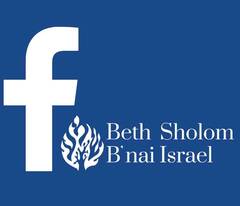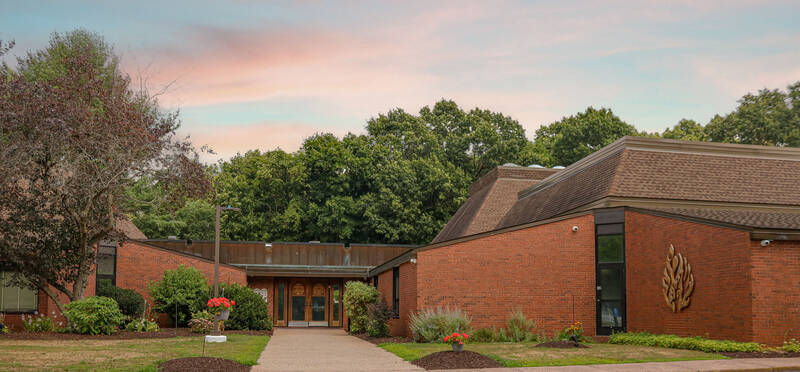Pesach 5783 April 6, 2023
Hag Sameach
I remember Pesach in my home when I was a child. Beginning at the end of Purim, my mother took apart every item of furniture, opened every drawer, cleaned out every closet and cabinet, so that when Pesach arrived, there would be no trace of Hametz in my house.
My mother was also a great cook, and for days she (and sometimes with her sister) would prepare for the Seder and for all the family that would gather around the table. And then, when Seder night arrived, my grandfather, my mother’s father, would sit on his chair full of pillows and read from the Haggadah every word as we sat, listened, and waited with great anticipation for my mother’s matza ball soup.
I loved my grandfather so much, but I did not love his Seder. But I was a child and had never experienced any other Seder. My mother drilled into us that during the week of Pesach we were never to eat anything at anyone else’s house. Nobody ever did Kosher for Pesach like we did and we could never be sure that any other house was kosher enough for us. I had no idea what a Seder was supposed to be; I had no idea what it could be.
My first year in Rabbinical School found me far from home for Pesach. I was invited to Seder at the home of the rabbi of my synagogue and by the executive director of the Bureau of Jewish Education in Los Angeles. Even then my mother worried if they would be kosher enough. Their kashrut was impeccable. But their Seder was beyond my imagination. We talked to each other, we shared stories, we compared different sedarim we attended in the past. We tried out new traditions and we talked late into the night (still, my mother’s matzah ball soup was way better than anyone else’s) I learned a new song for the Seder that year and rehearsed it every day for a year to make sure I didn’t forget it.
I don’t know what kind of a Seder anyone here had last night. I don’t know if anyone just read through a Maxwell House Haggadah, of if the Seder was just oriented for small children, of if everyone around the table got to participate in the Seder. What I know is that it is not enough to read the words or perform the rituals. What makes a Seder a Seder is when we are fully immersed in the story of the redemption, so immersed that we feel that we are the ones who will travel from Slavery to Freedom over the course of the evening. We don’t just “read” the story of our freedom, we are commanded to “reenact” the story, to make this story our own.
Rabbi Mike Comins, in his book, “Making Prayer Real”, talks about why prayer is so hard and what we can do about it. He writes, “If I go to services expecting the rabbi to impress me with her words and the cantor to move me with his musicianship, I am like a critic at a movie; when a good film touches me, I am spiritually enriched. If not, not. It mostly depends on the film. But if I pray like a painter about to draw on her canvas, I am responsible for finding my inspiration and engaging the practice. … The critical point: it depends mostly on me – my longing, my desire, my creativity, my talent, my sincerity, my devotion to the art. We have a choice: to consume art or to become a prayer-person, an artist of the soul whose sincere prayer serves the community as much as the community supports our prayer.”
Rabbi Comins may be talking about synagogue services, but it applies all the more to our service in our home, our Pesach Seder. How our Seder will turn out depends not on who is leading it, but on what we come to the Seder expecting to get out of it. If we want our Seder to be spiritually moving, then we need to crack open our spiritual side and inject its art into the story of Pesach.
What we often do not realize is that the Seder operates in two modes at the same time. One of them is found in the Haggadah. There is an order to the service, there are rituals to perform and blessings to be recited. There are questions to be asked, statements we have to state, and a door that needs to be opened. But there is also another mode for the Seder. That is the part that involves our body, and it involves our minds, and it involves our soul.
Meals in ancient Israel were done in the Roman fashion. They did not sit in chairs at a table. In the ancient world people reclined on couches when they ate. There were small tables in front of every couch that had room for wine and for the course of the meal that was being served. One reclined on the couch on their left side so they could eat the food with their right hand. And while they ate, they talked about what was happening in the world. Today we try to avoid talking about religion and politics because they are so divisive. They were just as divisive in the ancient world, but they talked about religion and politics anyway. They debated; they argued all while they were eating. One had to be a little careful about what they talked about because if it got back to the government that you were complaining, you could get into trouble with the governor or the emperor. So, the Rabbis devised the seder not as a place where one would sit at a table and just read a story. The Seder involved speaking about the topic of Slavery and Freedom. The Seder was about our body. What would slavery feel like? How much degradation would we feel each day. What would happen when we returned to our family at the end of the day? We could only eat flat bread because we were too exhausted to make anything fancier. The food of the slave, no matter what is served, is served with bitterness. What would we feel if we were slaves?
What about Freedom? It had been so long since we were free, all we know about is slavery. Along comes God and our oppressors are beaten back, inch by inch. The miracle of the plagues, do they give us a sense of revenge? A sense of vindication? Or do we feel sorry for the Egyptians who suffered so much as each plague ran its course? The world of the enslavers was turning upside down, but so was our world. What would Freedom mean to us, to slaves that saw their freedom coming? Can we taste the bread of freedom? Can we taste the bitterness of slavery? I know, most people beg to just have a small taste of the maror. How do we feel as we walk through the waters of the Sea of Reeds? How do we feel when the first born of the Egyptians died but our children did not die? How do we feel knowing that these same Egyptians threw our own babies into the river just to terrorize us?
We don’t just read these words; we feel these words. The Haggadah is not the story of our people, it is our diary of what happened to us when we were slaves in Egypt and God redeemed us and set us free. We say “Dayenu” “It would have been enough” if God had done less for us, maybe only made us partially free, maybe just lightened the burden of our slavery. But God did not hold back God’s hand and now we can live free, we can taste freedom, we know what it means to have God care about us, to create miracles on our behalf, to know that God loves us?
To understand the Seder we have to have complete faith in the God who saved us from slavery, not some random ancestors long ago and far away.
When the meal was finished, did we just walk away from the Seder? Did we say we had completed our requirements to relive the history of our people? If so, then we missed the final and one of the most important parts of the Seder. Near the end of the Seder, we open the door. We open the door for the Prophet Elijah.
Rabbi Ed Feinstein of Encino CA in a recent lecture noted that opening a door is an act of faith. It shows that we are not hiding what we are doing inside, and we are not afraid of what may be outside. When we open doors, some things can come in and some things can go out.
Outside there is a world that has not been redeemed. God redeemed us but when God gave us the Torah we became responsible for bringing redemption to the rest of the world. There is still slavery in the world, there are still people who are stuck in narrow places and need help to find their way to freedom. On Pesach we became a nation, a people. But we also became responsible; we became responsible to bring others who are not free, to freedom. Do I really need to list those in our world who are still in slavery and who are being oppressed? People who are being terrorized by those with guns. People who must flee their home and become refugees, just like our people in the wilderness of Sinai. People who still enslave foreigners, children, and women into some of the worst kinds of slavery, involving prostitution and drug smuggling. There are still governments in this world who think that some lives are too cheap to have to care about them. They are all our responsibility; we can open the door for Elijah, the prophet of redemption to let the world know that we will not rest until all people are redeemed.
What goes out of our doors is the knowledge that God is near, and God cares and loves all people. What goes out our doors is the understanding that there is Justice in the world and true Justice will find a way to free those who may be bound either in body or soul. What goes out is the certainty that one day, Justice will win for all people. What goes out our door is the promise of freedom, a freedom that will overcome all forms of oppression. What goes out our door is the promise that one day all people will be free.
Right now, we live in a world of fear. Fear is a terrible feeling to endure. It leads us to diminish our expectations of the world. It leads us to expect less than what we deserve. It is fear that makes slavery possible. It is fear that makes us give up on our democracy and hide behind autocrats who make us believe that only they can make us safe, as they enslave us all over again.
Our Seder ends with the declaration, “Next Year in Jerusalem.” It is less a fact than a dream. The Seder ends with a dream of what the world can be if we work to finish redemption. I hope we will all have a second Seder tonight. I hope that everyone will pick up their Haggadah after the meal and try to take our God given freedom into the future. Elijah is the messenger of God. What message will we send back to God at the end of our Seder? What dreams do we have of what a better world might look like? What dreams do we have of how we can help make that world real? As our Seder ends, share your dreams with those at your Seder table and resolve to make your dreams for the world come true.
I wish everyone a Hag Sameach v’Kasher …. As we say Amen




